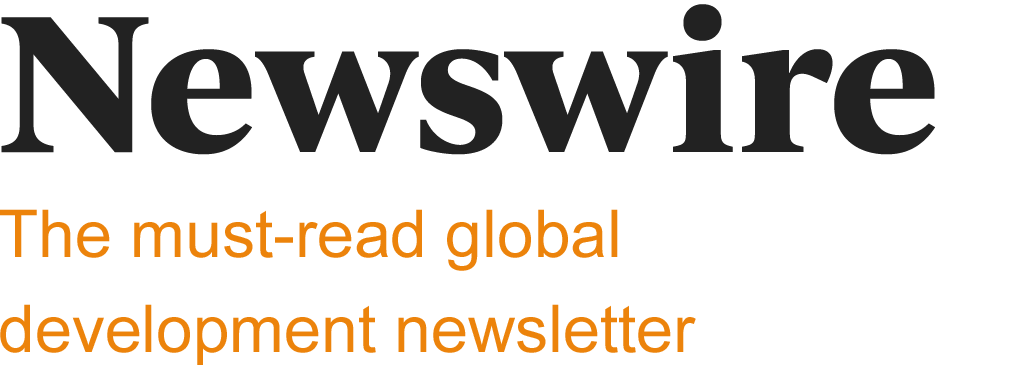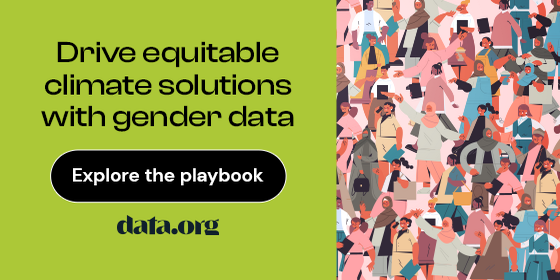|
USAID's partnership push signals localization shift.
|
|
|
|
One lesson the Serum Institute’s leadership has drawn from the Indian company’s history is a commitment to economies of scale — and that’s led them to resist the growing demand for local vaccine production. Also in today’s edition: Novartis’ new malaria vaccines, and the pandemic fund hits another snag. 
|
|
Scaling a giant
Anyone in the vaccine game knows of the Serum Institute. Already the world’s largest vaccine manufacturer — and a critical conduit of jabs to lower-income countries — the Indian biotechnology company is looking to make itself globally indispensable with a new malaria vaccine and a critical role in a new venture to respond to future outbreaks in less than 100 days.
But while Serum is expanding rapidly, it doesn’t believe local communities should be trying to follow in its footsteps. One of the lessons that Serum’s CEO Adar Poonawalla has drawn from his company’s history is a commitment to economies of scale — and that has led him to caution against the burgeoning demand for local production, which grew out of the blatant vaccine hoarding seen during the COVID-19 pandemic. Whereas most manufacturers produce vaccines in the tens of millions, Serum has the capacity to manufacture hundreds of millions, Poonawalla tells Devex contributor Andrew Green. “That brings about economies of scale,” he says, “and you can bring down the prices.” “If you want these countries to get a product at the lowest possible price, you have to make it in one location or maybe two locations that are very large-scale to be able to do that,” he advises. The formula seems to be working for Serum: The institution estimates that roughly two-thirds of the world’s children receive at least one vaccine manufactured there. Read: Local doesn't mean low cost — Serum Institute shares global scale-up plans |
|
|
|
A MESSAGE FROM DATA.ORG
Empower change: Close the gender data gap for climate action
Explore data.org’s new gender data and climate playbook to learn how gender-sensitive data is crucial to understanding how climate change exacerbates inequality. Access strategies on how we can collectively develop practical tools to close the gender data gap and create a more sustainable, equitable future. |
|
|
|
Mosquito hawks
Meanwhile, global pharmaceutical company Novartis has several new drugs in the works to treat malaria and tackle the bug’s resistance to medicine. They’re sorely needed: All the current treatments for the disease rely on artemisinin — but parasite resistance is starting to chip away at that drug’s effectiveness.
Novartis’ most advanced treatment in clinical development is Ganaplacide, currently in phase three trials in several African nations. Combined with the antimalarial drug lumefantrine, it has also shown to clear mosquitoes that have developed partial resistance to artemisinin, Caroline Boulton, global program head for malaria at Novartis, tells Devex Senior Reporter Jenny Lei Ravelo. Novartis expects the trials to conclude in 2025. Read: New Novartis drug aims to tackle parasite resistance to antimalarials |
|
Partnership push
One theme rang out in USAID’s quarterly business forecast this week: new partners, new partners, new partners. For decades, the agency has been slammed for awarding money to legacy companies and organizations built to win government contracts. But to USAID’s credit, the agency hasn’t shied away from that criticism, my colleague Elissa Miolene tells me.
“We know that bureaucratic burdens can make it challenging to work with us. These barriers often slow down progress and shut out smaller and more local organizations,” said USAID Administrator Samantha Power during the business forecast this week. “We are committed to changing that.” That commitment comes at a good time. Three years ago, USAID pledged to shift 25% of its eligible funds toward local entities by 2025, and ensure half of its programs were locally led by 2030. As of 2022, just 10% of USAID’s multibillion-dollar funding pot went toward local organizations — but a number of shifts within the agency are clearly trying to change that. The first, highlighted by Power, is a reduction in workload for initial grant applications: the agency is encouraging partners to submit concept notes of five pages or less at the starting stage. The second, voiced by Power and others during the forecast, is a focus on translation. As of this week, the agency’s WorkwithUSAID.gov platform is now available in French and Spanish, with an Arabic translation “on the way.” USAID has also launched a new program translating solicitation and funding announcements into Amharic, Arabic, French, Portuguese, Spanish, and Swahili. A slew of other technical forms and documents are being worked into even more languages, explained USAID’s deputy director for acquisition and assistance, Deborah Broderick, including Chichewa, Somali, and Hausa. “It sounds small, but it’s really very important,” Justin Fugle, Plan International’s head of policy, told Devex in a conversation about language flexibility earlier this year. “Right now, they exclude an awful lot of local, qualified organizations from countries where English is not the main language. It maintains a power dynamic that we’d really like to change.” ICYMI: What's stopping USAID from localizing? We are also taking an in-depth look at the current state of localization with our newly updated report: The localization agenda 2.0. Download your copy now. |
|
|
|
Sponsored by Mastercard Center for Inclusive Growth
What to expect at the 2024 Global Inclusive Growth Summit
In this video interview, Devex's Raj Kumar and Mastercard's Shamina Singh share what they're looking forward to from this year's summit. |
|
|
|
The mayor things change
The World Bank Spring Meetings are almost upon us, and climate change is — as always — one of the most pressing concerns. Some 30-odd mayors from high- to low-income nations wrote to 10 multilateral development banks, including the World Bank, urging them to turn their “gaze” and “influence” to help cities access the climate finance they need.
Cities pull the short straw in climate finance, clinching only 7%-8% of the money they need annually, and — as always — the gap is even more pronounced for cities in low- and middle-income countries, writes Chloé Farand for Devex. With half the world crammed into cities, urban sprawls account for over 70% of global carbon emissions. And by 2050, another 2.5 billion people are expected to squeeze in, and without strong carbon-cutting efforts, city emissions could double. That means more than 1.6 billion urban dwellers could experience extreme heat by then and over 800 million people in nearly 600 cities will be at risk of sea level rise if emissions don’t come down. To tackle this, the group of mayors has called on MDBs to include urban climate finance in their strategies, provide cities with scaled-up concessional financing, technical support, and policy advice, and help them mobilize private investments. Read: Mayors with ‘climate ambition’ urge MDBs to help plug finance gap |
|
Red line drawing
The ninth session of the Intergovernmental Negotiating Body wrapped up on Thursday, but with still no clear end in sight on a pandemic agreement. There’s considerable contention in the draft, which has now grown to over 100 pages, peppered with brackets to retain, delete, or reserve specific text.
One of the most contentious issues — though one source tells Jenny “It’s hard to find a paragraph that’s not contentious” — is funding, with negotiations focused on creating another fund under the pandemic agreement for global south countries. According to an insider Jenny spoke to, the European Union and United States are pushing back against a new fund. “It's like a red line for them,” the insider says. Instead, high-income countries want to use the Pandemic Fund as the financing vehicle for the agreement, and said they will reform governance of the financing mechanism. However, the insider says several global south countries are concerned about the transparency and accountability of the Pandemic Fund. There are concerns that governance is not inclusive enough and lacks meaningful participation. The pushback on the creation of a new fund has made many global south countries "miserable,” says the insider. “Financing has caused a lot of misery and certainly has dampened the mood towards the end of the negotiations” this week, the insider says. Another round of talks — a resumption of the ninth session — will take place from April 29 to May 10, leaving a gap of just two weeks before the start of the World Health Assembly. ICYMI: Latest pandemic treaty draft text still has 'many weaknesses' Related read: Not another pandemic fund, says Pandemic Fund |
|
|
|
SPONSORED ANNOUNCEMENT
Lead any project and inspire any team
A Master's in Project Management from Georgetown University prepares you to plan, manage, and execute even the most complex projects. Ideal for working professionals, our program offers flexible options to take classes online, on campus, or both. You'll graduate with the well-rounded expertise that positions you to lead projects and teams with confidence and add value to your organization. Learn more in our April 12 webinar. |
|
|
|
In other news
The United Nations refugee agency is urgently seeking $1.4 billion to aid over 2 million South Sudanese refugees and their host communities in Africa this year. [UN News] The International Court of Justice issued provisional measures instructing Israel to open additional land crossings for aid to enter Gaza. [Al Jazeera] In a first, two major aid agencies will host a global summit to address heightened risk of mass fatality heat disasters due to the climate crisis. [The Guardian] 
|
|
Thank you for reading today’s Newswire, edited by Fiona Zublin, copy edited by Florence Williams, and produced by Patricia Guerrero. Have a news tip? Email [email protected].
Forwarded by a friend?
Sign up here to receive the Newswire directly.
|
|
Devex thanks our partners for supporting our newsletters.
Our editorial content remains independent. Interested in partnering with us? Get in touch. |
|
Connect with us:
|







